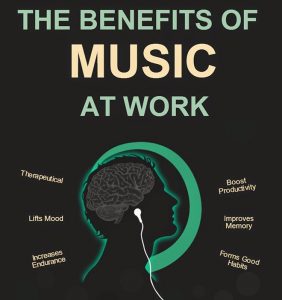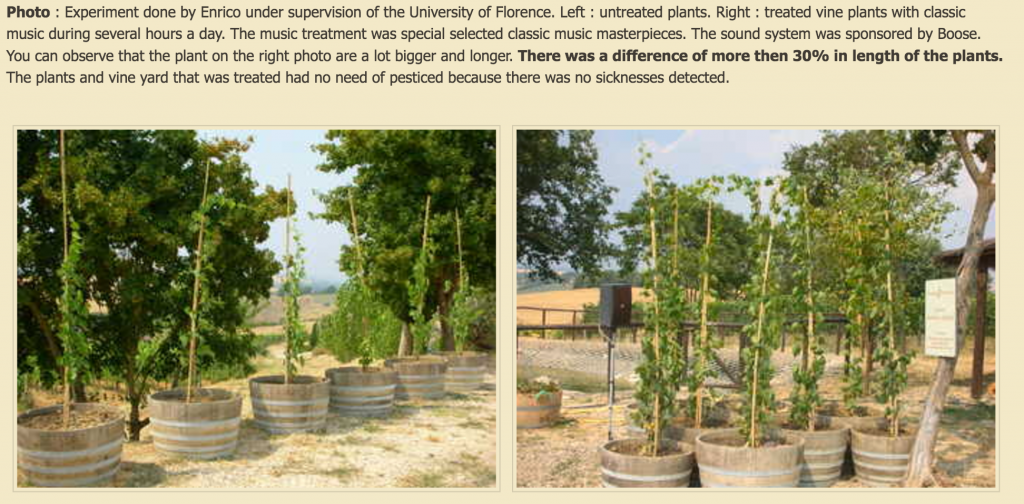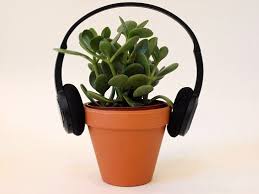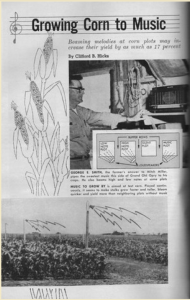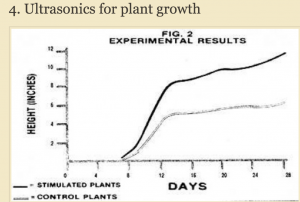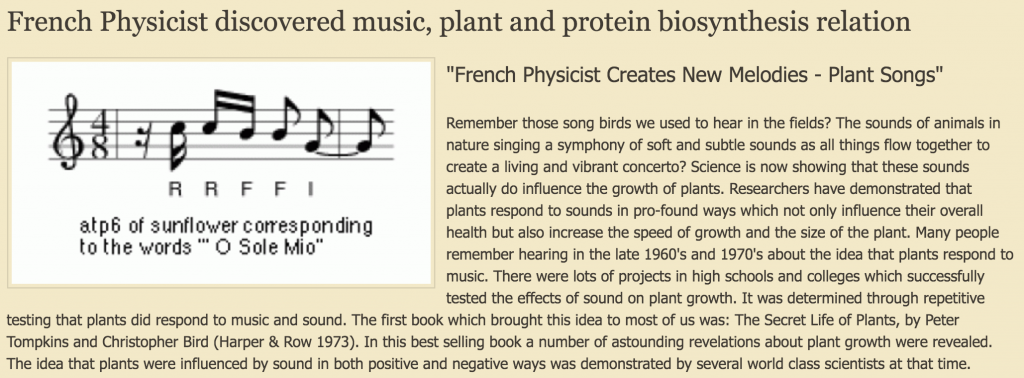SYMPATHETIC VIBRATION AND AGRICULTURAL PROPAGATION
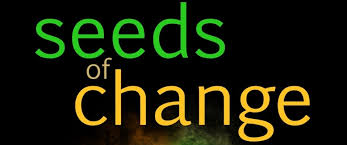
SYMPATHETIC VIBRATION AND AGRICULTURAL PROPAGATION
Donna Carey, L.Ac., and Ellen F. Franklin, M.A.
“The Kairos Institute of Sound Healing was founded in Seattle, Washington, in 1997 and moved to northern New Mexico in 2001. The professionals there are the creators of the Acutonics System, and they have trained practitioners and teachers throughout the world. Acutonics is a system of vibrational sound healing rooted in Oriental medicine and philosophy that uses tuning forks and symphonic gongs tuned to the planets, Tibetan bowls, bells, drums, and rattles.”
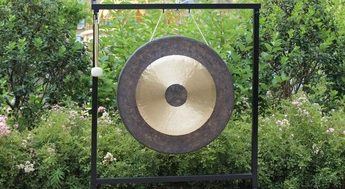

“After years of working with sound and people, Kairos cofounder Donna Carey also brings her attention to the effect of sound frequencies on seeds. I asked the Kairos team to share what they have discovered. The following narrative is provided by Donna Carey, L.Ac., and Ellen F. Franklin, M.A.Located at 8,500 feet in a rural community in northern New Mexico, the Kairos Institute of Sound Healing, our students and teachers have been conducting experiments in the use of sound vibration to enhance agricultural production.”
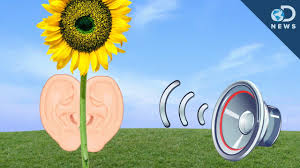
“Our research has focused on the effects of sympathetic sound vibration and dimensional harmonics, in seed germination, plant pollination, fruit setting, and quality and quantity of fruit and vegetable production. Driven by the desire to create a sustainable future that would generate sufficient quantities of quality food to feed our community, we applied our knowledge of human physiology, meridians, planetary science, and sound vibration. Our experiments in the direct application of sound frequency to plants exceeded our wildest expectations”
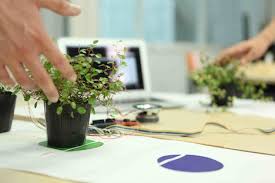
“In our outdoor gardens in previous years, plant size was small, plant production was slow, and yield was minimal due to the harsh growing conditions and short season. This first domed year (2009), our season was equally short and harsh with less sun and little rain in July, which is a critical month for growing. In our experiments, we started our outdoor plants in the dome and applied sound vibration from specific tuning forks and hand chimes of the same frequency over the seedlings.”
“The outdoor harvest was far superior to prior years!In the dome, the plant growth was otherworldly. People who saw them wondered if we were feeding steroids. Many of the tomato plants grew 8 to 10 feet in height, squash plant leaves were over 3 feet in diameter, and both summer and winter squash and all varieties of tomatoes have been extraordinarily prolific.”
“Our experiments focused on the use of planetary tuning forks and chimes that are tuned to the frequency of Mars and Venus, which when combined, create a musical 5th. The frequencies we work with are derived through science and mathematics—Kepler’s calculations of planetary rotations, as well as through research on the effects of planets on human physiology.6Functionally, the vibrations of the tuning forks, when activated close to the flowers, generate a field that simulates the fluttering or movement of the bees.”

“Growing plants in an indoor environment presents unique challenges in the area of pollination, biosphere management, and creating and maintaining an ecosystem in which plants can thrive, grow, and produce.”
“Our work with sound and agriculture draws heavily on the principles of, understanding that the nature of a plant is in direct correspondence to the nature of a human, and that plants, planets, and humans share a deep and profound connection to the earth, where one mirrors the nature of the other”
“All of our experiments incorporated our knowledge of Sacred Geometry, Sympathetic Vibratory Physics, and the Acutonics approach to optimal health, which draws on the art and science of sympathetic resonance, and our profound relationship to the archetypal, mythic, and correspondent qualities of the planets.Our experiments with plants indicate that the same basic principles can be applied to the physiology of plants. There was more than 97 percent fruit production from flowers using this technique, and many of our plants continue to flower and produce. The growing sequences and maturation of the plants were also enhanced through the use of the symphonic planetary gongs.* The application of tuning forks was a highly specific approach to enhance pollination. The gongs used represent three cycles (frequencies) of the Earth, the four seasons, the Earth spinning on its own axis, and the Earth going through its precessional cycle. The use of the gongs supported the entire agricultural process creating a sound harmonic of the earth itself in the growing dome to enhance the growth of the plants, and to establish daily, seasonal, and extended cycles.These protocols are based on the way we work with people: 25 seconds, applied 3 times, in the field of the seeds to germinate and then over the flower of the plant to pollinate, in the way a bee would, the vibration of the tuning forks and gongs enhance pollination.”
“The use of sound vibration in the dome was highly successful. Germination, pollination, and taste of the produce exceeded all projections. Because our office and gardens are located in an ancient caldera with numerous underground springs, it is not possible to generate a double blind study where some plants receive sound vibration and some don’t. Even our attempts, which focused largely on the use of sound in the dome, resulted in our outdoor gardens producing at record levels. Although many seeds were started in the dome—based on our record keeping from prior years, when sound vibration was not used—it is clear that productivity and quality of our produce has been greatly enhanced through the application of sound, even given the distance between the dome and our outside gardens. We believe there is tremendous potential to improve the yield, quality of produce, and pest management through the applications of sound. This may well be the future of agriculture.”
 “One of our students, experimenting with sound and wine production in Napa Valley, California, is also having exceptional results.”
“One of our students, experimenting with sound and wine production in Napa Valley, California, is also having exceptional results.”
“We hope to identify other opportunities to directly compare productivity differences between plants that receive sound frequency and those that don’t.When you consider the beneficial use and application of sound frequency to agriculture, it is clear that future use of intentional sound vibration has enormous potential in all aspects of human and planetary health.”
“The power of sound”
Joshua Leeds
PHOTOS AND INFO ARTICLES FROM INTERNET
ENTRAINMENT
Hello lovers of sound and music
It is A really important for who is working with recordings productions and sessions in the music and sound healing field .
Joshua leeds is one of the best in the world as a music and sound producer for healing , treatments disorder ,ect, etc,etc….
all this concepts and so much more plus the practical applications we will learn with his easy and cleaver way to teach in the training at Ibiza Sound healing and therapeutic Music.
More info about the training at Ibiza with Joshua Leeds click this link.
.https://www.facebook.com/events/129944647608327/?acontext=%7B”ref”%3A”3″%2C”ref_newsfeed_story_type”%3A”regular”%2C”feed_story_type”%3A”17″%2C”action_history”%3A”null”%7D
If you are interesting don’t lose this opportunity .
thank you very much for traveling together with the sound and music !
love
Deva
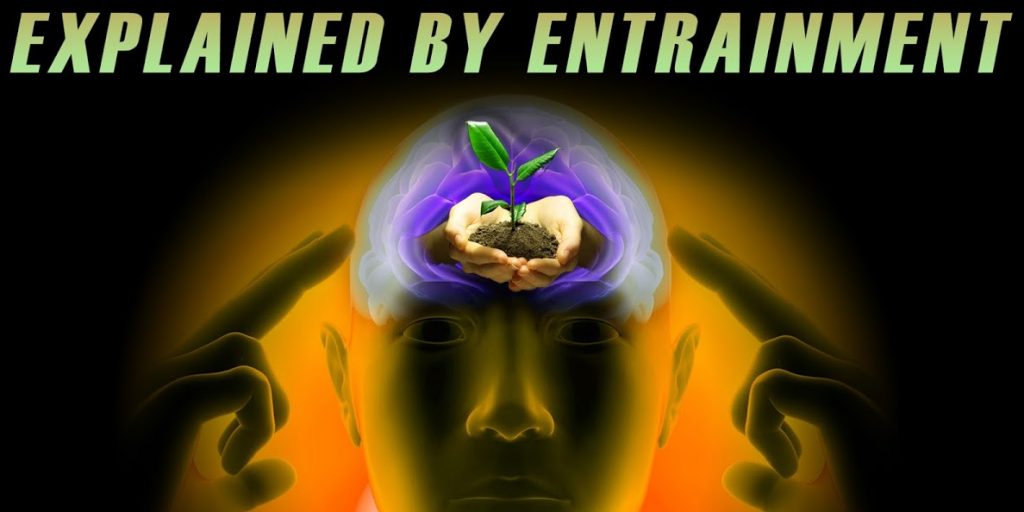
ENTRAINMENT
In this book, I have extensively discussed entrainment and the role it plays in psychoacoustics. Entrainment is integral to any musical effect. Not only does it affect our internal landscape through external tempos, but it is also the vehicle by which our body pulses synchronize with each other. Given that rhythm is ubiquitous, entrainment is a vital influence.

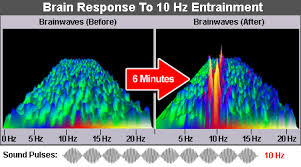
So is this valuable tool used in production? I have an awareness of it at all times. For the most part I try to create in the music an easily distinguishable pulse. This makes it easy for the nervous system to latch on and take a ride.
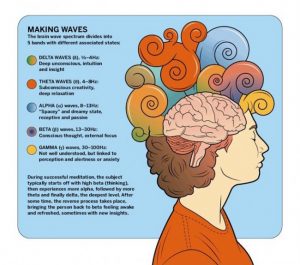
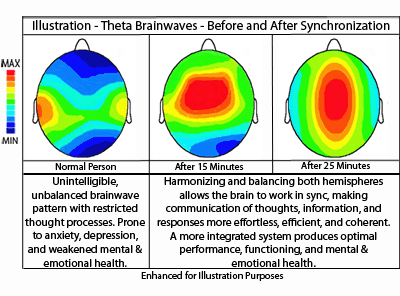 An overarching concept in soundwork is trust. In my productions I do everything I can to win my listeners’ ears. My goal is to help them feel so safe in the arms of my sounds that they will go anywhere the music takes them. I picture an escalator with very comfortable chairs in which listeners gladly recline. With such beautiful sounds and gentle rhythms, they have nothing else to do but to come along for the ride.
An overarching concept in soundwork is trust. In my productions I do everything I can to win my listeners’ ears. My goal is to help them feel so safe in the arms of my sounds that they will go anywhere the music takes them. I picture an escalator with very comfortable chairs in which listeners gladly recline. With such beautiful sounds and gentle rhythms, they have nothing else to do but to come along for the ride.
 The only time I don’t use easily felt entraining pulses in my production work is when I want no rhythmic movement at all. When I coproduced Andrew Weil’s Sound Body Sound Mind, the purpose was to take the listener to a place most conducive to self-directed healing. The sixty-minute sound track started with a tempo of about 120 beats per minute. Over the first twelve minutes, coproducer Richard Lawrence (1946–2005) and I gradually ramped down to the slowest rubato space we could create. We remained there for thirty-six minutes. Toward the end of this segment, we very gently added a slow tempo, gradually ramping back up to a waltzing pulse of about eighty beats per minute. In the rubato section, called “The Deep,” our job was to create a sonic space that wouldn’t disturb theta and delta brain waves. We had to make sure we did nothing to disturb someone in this space of delicate, subconscious access that had been achieved by our entrainment and the addition of binaural beat frequencies. In this section, rhythm would have been jarring and counterproductive. We made every effort to stay out of any form of pulse. To accomplish this nonentraining effect, we used non-Western instruments—sitar, Bansuri bamboo flute, tamboura, Tibetan bowls—all sounds that could fill the space yet be out of the world of rhythm. Yes, we could have used Western instruments, for any instrument can play rubato (without tempo). But we felt that because we had employed Western instruments in a classical context in the ramping down and then back up, something completely different would contribute to the sense of freedom from form.
The only time I don’t use easily felt entraining pulses in my production work is when I want no rhythmic movement at all. When I coproduced Andrew Weil’s Sound Body Sound Mind, the purpose was to take the listener to a place most conducive to self-directed healing. The sixty-minute sound track started with a tempo of about 120 beats per minute. Over the first twelve minutes, coproducer Richard Lawrence (1946–2005) and I gradually ramped down to the slowest rubato space we could create. We remained there for thirty-six minutes. Toward the end of this segment, we very gently added a slow tempo, gradually ramping back up to a waltzing pulse of about eighty beats per minute. In the rubato section, called “The Deep,” our job was to create a sonic space that wouldn’t disturb theta and delta brain waves. We had to make sure we did nothing to disturb someone in this space of delicate, subconscious access that had been achieved by our entrainment and the addition of binaural beat frequencies. In this section, rhythm would have been jarring and counterproductive. We made every effort to stay out of any form of pulse. To accomplish this nonentraining effect, we used non-Western instruments—sitar, Bansuri bamboo flute, tamboura, Tibetan bowls—all sounds that could fill the space yet be out of the world of rhythm. Yes, we could have used Western instruments, for any instrument can play rubato (without tempo). But we felt that because we had employed Western instruments in a classical context in the ramping down and then back up, something completely different would contribute to the sense of freedom from form.

One of the vehicles I employed when working with the Arcangelos Chamber Ensemble is pizzicato—lightly plucking strings, rather than using the bow. This provides a gentle rhythmic pulse. Quite often Lawrence and I would take an existing internal voicing and have the string players pluck each note instead of using the normal legato bowing. The effect, especially with multiple players, is a wonderful round sound that provides an easily recognized rhythmic pulse. Track 8 in the embedded audio is our arrangement of Vivaldi’s Largo from the Oboe Concerto in Ba Major. When listening to this arrangement, notice the use of the pizzicato. It creates an ongoing, nonobtrusive effect. Yet psychoacoustically, this gentle plucking becomes an escalator. Your nervous system locks on to this external periodic pulse and will match it. Volumes can become quite low, yet the nervous system is attuned to the rhythm.

Often, in the course of a piece, we will either gradually speed up or slow down, depending on where we want to take the listener. Effective use of entrainment involves the periodicity of the tempo. Therefore, the goal is to stay as regular in pulse as we can. If we become too erratic, the entrainment will not be successful. Notice how on track 6, our rendition of Mahler’s Poco Adagio from Symphony no. 4, the pulse is set by the pizzicato bass, then gradually slows, then slows even more. Using the iso principle, our goal was to sonically meet listeners near the tempo we imagined their body pulses would be when first lying down. The intention of the album is to facilitate falling asleep. Therefore, our destination, simply put, was to transport the listener into as slow a zone as we could. By the end of the piece, notice how we reach almost a nontempo state. In the process, the bass pizzicato comes in and out. But because we established this as the pulse initially, we assume that each time it returns it is recognized as the rhythmic escort. With entrainment, that is essentially what we are doing. We are merely a body pulse escort service!


the power of Sound
Joshua Leeds.
THE SOUND AND MUSIC ALLIANCE (SAMA)

THE SOUND AND MUSIC ALLIANCE (SAMA)
SAMA acknowledges the timeless bond between sound and life, and honors the indigenous, traditional, historic, scientific and aesthetic wisdom from which sound and music methods, practices, and knowledge evolve.FROM SAMA MISSION STATEMENT.
A bone flute was recently found in France, dating back thirty-two thousand years—evidence that humans have been playing music since the dawn of culture.1 Ruminations on music by Pythagoras (d. 495 BCE) and Plato (d. 347 BCE) endure, varied functions of sound are memorialized in the Bible, and early scientific considerations go back to J. Struthius (1510–1568).2 Flash forward five hundred years, and music therapy is abundant. High-intensity focused ultrasound (HIFU) offers noninvasive treatment for certain cancers, rhythm becomes a prescription for Parkinson’s, there are 270,000 active choirs with 42.6 million people singing in America, and the rattle and drum continue to serve as powerful tools of indigenous sound healers. This legacy, which spans thousands of years and touches almost every culture, gave birth to SAMA in 2008.
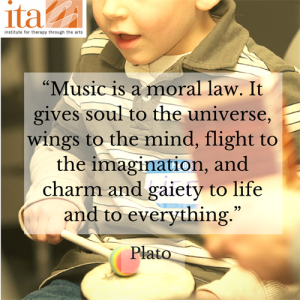 These days, there is active exploration and use of benefit-oriented music and sound—from birthing to dying! Human beings certainly know how to create tools, and intentional sound and music as a transformative process is coming into its place in the sun.
These days, there is active exploration and use of benefit-oriented music and sound—from birthing to dying! Human beings certainly know how to create tools, and intentional sound and music as a transformative process is coming into its place in the sun.
How do practitioners of sound vibration—as abundant as air and as soothing or destructive as water—self-organize? And why would they, anyway?
ETHICS IS THE KEY
I remember sitting in a circle of colleagues at a New Hampshire sound colloquium in 1993. The consideration of “ethics” was hot in the air. Unfortunately, proprietary interests were too thick, and a formation of ethical standards was lost in the vapors. Fifteen years, however, is not a long time in the overall schema of professional politics and field development. Cohesion, like entrainment, seems to be a natural process . . .By 2007, it became apparent that the emerging field of soundwork had actually come into view and was being noticed by our culture. Publishers sensed the marketplace, and bookshelves were filled with sound healing books of many stripes, benefit-specific products of increased scientific basis were abundant, highly focused training programs were maturing, and schools were beginning to teach year-long survey courses about the power of sonic energy. The nubile field of sound also presented abundant commercial possibilities. As conferences proliferated, some framed the field in a sophisticated manner, of which we are worthy. Other promoters, however, weren’t so mindful.At this time, Lisa Rafel (musician and therapeutic soundworker) and I were on the faculty of a San Francisco sound training program. We compared notes and discovered we were both greatly concerned about the growing velocity of commercial interest in the world of intentional sound and music. We were troubled by the claims of many product manufacturers, teaching programs, and individual practitioners looking to sell a customer on the benefits of their offerings, sound or not! Finally, upon seeing a large soundwork confab turned into a carnival environment, Rafel and I were sufficiently chagrined. Could our cherished emerging field actually become a commercialized wasteland, inappropriately packaged to the public and pulled into the scrutiny of governmental regulatory agencies?Amid our concern were increasing numbers of people of all ages, interested in the field—many looking for a new career. Sound will always be a powerful attractor. We noticed the advances in research and material application, the passionate commitment of sound innovators, and the wonderful evolving synergies of new combinations. With a sacred lineage of thousands of years, professional integrity, and appropriate public presentation, how could the field of soundwork not thrive?The primary question that surfaced for Rafel and me was, What would serve to keep the practice and evolution of intentional sound integral? All the elements were present: a public love affair with music, the thrust of the energy of sound, and the desire for holistic interaction with allied fields! In the public eye, would soundwork be seen as a cheap new trick or a meaningful evolution of an energetic resource with a deep lineage and growing scientific basis?With these guiding inquiries, our work began. The mission statement says it all. The Code of Ethics and Membership Standards that recognize excellence can be found

online: ThePowerOfSound.com/SAMASAMA
Mission StatementSAMA is an interdisciplinary alliance that promotes our mutual interests in the intentional use and transformative power of sound and music throughout the full spectrum of life cycles.
SAMA affirms the diversity of disciplines that utilize sound and music and advocates its use in health, education, research, technology, science, and the holistic arts.
SAMA advances harmonious collegial relationships, ethical behaviors, and multidisciplinary competencies.
SAMA promotes the professional development and welfare of its members.SAMA upholds a code of ethics applicable to its membership.
SAMA recognizes reputable and responsible sound and music disciplines, educational programs, practitioners, and products.
SAMA affirms the value of both qualitative and quantitative research.
SAMA serves its members, the public, institutions, employers, and policy makers through its support of excellence in education, practice, and research.
SAMA develops educational objectives, programs, curricula and/or continuing education events, in support of our 501(c) 6 status, to provide learning opportunities for those working with music and sound.
SAMA acknowledges the timeless bond between sound and life, and honors the indigenous, traditional, historic, scientific, and aesthetic wisdom from which sound and music methods, practices, and knowledge evolve.
I include SAMA’s basic principles within the 2010 revision of this book because:SAMA is the first American professional association of intentional music and sound with a primary focus on uniting a very broad field—including scholars, researchers, writers, musicians, practitioners, and educators—to advance and improve the professional and business circumstances of all members. I recommend your support and membership in this worthy initiative.
I encourage the inclusion of SAMA’s ethical tenets within all aspects of soundwork.
SAMA is indicative of the maturation of the field of soundwork.
The power of Sound
Joshua Leeds
music is important !!
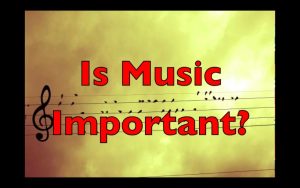 Choice Of Music
Choice Of Music
Our psychological response to any piece of music can enhance or negate the effect of a sound tool. If listeners don’t like the sounds they’re hearing, they won’t want to listen. This is a simple fact. To facilitate effectiveness, you must determine a couple of things when you choose your music:
Who is the intended audience and what kind of music will be best suited for its enjoyment?
What kind of music is appropriate for the psychoacoustic treatment you will visit on it?
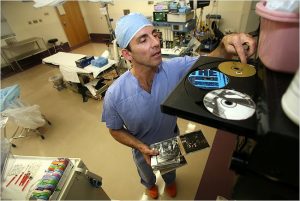
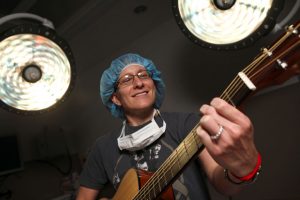
Let’s examine the “intended audience” consideration. One of the lovely people I interviewed in Sonic Alchemy was Dr. Fred Schwartz, an Atlanta-based anesthesiologist and former saxophone player. In the operating room, Schwartz has as many music CDs on his anesthesia cart as he has other medical tools. He is an innovator in the use of music and anesthesia and is highly respected for his work. Schwartz shares a poignant story: “I’ve always loved music and thought it had a lot of applications. Beginning in medical school, I used music with some of my patients. But what really affected me profoundly was when I was an intern, working in an intensive-care unit.“I had a seventeen-year-old fellow who had a motorcycle accident. He had become comatose from the head injury. I was taking care of him and spending a lot of nights there. He wasn’t responding to anything and it had been weeks already. So I started playing flute to him and his eyes would move when I played the music. So I thought, ‘Gee, he is responding, there is something there.’
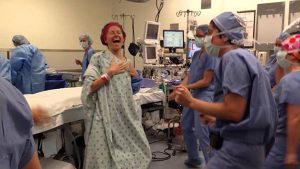
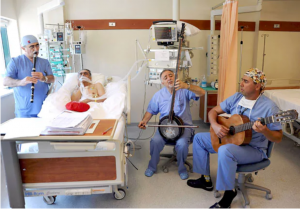
“A psychoacoustic exploration of rock or heavy metal music indicates that the characteristic tempos and timbres create a slightly different result.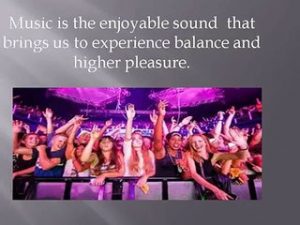 Rock, in its many manifestations, is usually more uptempo than is rap. The consequent brain wave states will most likely be in beta rather than rap’s low beta or alpha. Heavy metal relies on the distorted sounds of electric guitars. The primary audience for heavy metal is teenage boys.
Rock, in its many manifestations, is usually more uptempo than is rap. The consequent brain wave states will most likely be in beta rather than rap’s low beta or alpha. Heavy metal relies on the distorted sounds of electric guitars. The primary audience for heavy metal is teenage boys.
 Something about the resonance of heavy bass, loud kick drum, and guitar distortion seems to soothe excessive testosterone. Venturing a guess: the heavy bass discharges while the distortions preoccupy the auditory function. (Imagine what the auditory system goes through to decipher and analyze, in real time, the sound of distortion.) The purpose of this conversation is not to judge, pigeonhole, or generalize different styles of music. Rather, my goal is to stimulate your analysis of the effects of tempo (entrainment) and tone (resonance)”
Something about the resonance of heavy bass, loud kick drum, and guitar distortion seems to soothe excessive testosterone. Venturing a guess: the heavy bass discharges while the distortions preoccupy the auditory function. (Imagine what the auditory system goes through to decipher and analyze, in real time, the sound of distortion.) The purpose of this conversation is not to judge, pigeonhole, or generalize different styles of music. Rather, my goal is to stimulate your analysis of the effects of tempo (entrainment) and tone (resonance)”
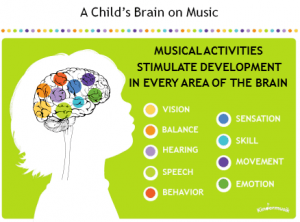
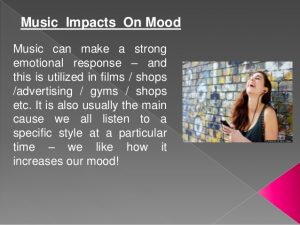
“When I speak of psychoacoustic treatment, I refer to the different processes of resonance and entrainment necessary to achieve your goals. You will most likely rearrange the music you are adapting in order to accentuate rhythmic pulse, raise or lower pitch, change orchestration, and simplify melodic content. (I will cover these areas in detail shortly.) The main consideration is what kind of music is most easily adaptable. I find that classically oriented music addresses both personal taste and adaptability. Still, I encourage you to try these principles in other musical styles to help diversify the field”
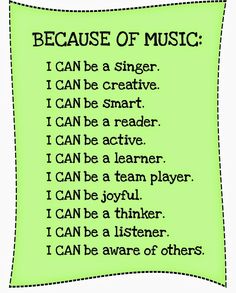 I can be aware of myself, recovery from illness , destroy or create many things , ETC, ETC……..
I can be aware of myself, recovery from illness , destroy or create many things , ETC, ETC……..
words collected from “the power of sound”
Joshua Leeds.
Music affect us so deep
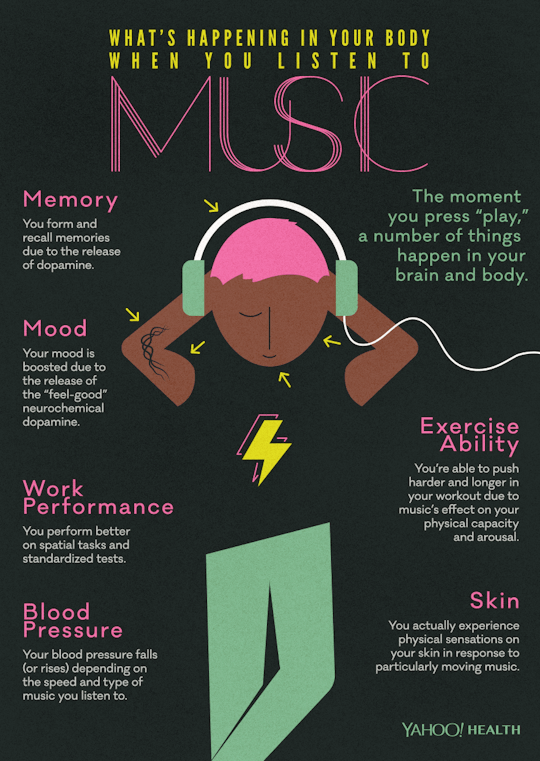
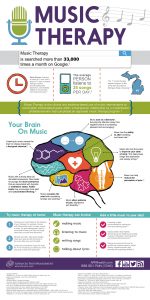
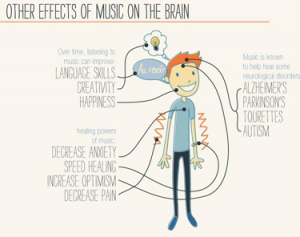 BE SMART , HOW TO USE THE MUSIC IS REALLY IMPORTANT FOR THE QUALITY OF YOUR LIFE
BE SMART , HOW TO USE THE MUSIC IS REALLY IMPORTANT FOR THE QUALITY OF YOUR LIFE
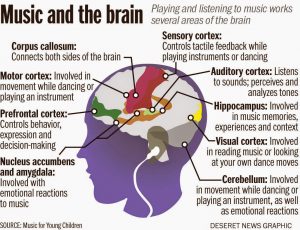
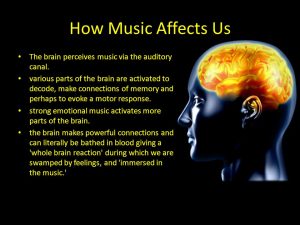
various parts of the brain are activated to decode, make connections of memory and perhaps to evoke a motor response. strong emotional music activates more parts of the brain. the brain makes powerful connections and can literally be bathed in blood giving a whole brain reaction during which we are swamped by feelings, and immersed in the music.
